IoT devices are revolutionizing every aspect of supply chain, from manufacturing through packaging, shipping, delivery to an end point such as a grocery, pharmacy or retail store shelf, as well as on-site product management. The ability to track products and shipments in real time and report status has taken enormous leaps. The new technologies supporting IoT-enabled supply chain management are eliminating guesswork and creating seamless integration across the entire chain.
With an IoT-enabled shipping network, companies can quickly find out where their goods are, what their condition is, and if anything has gone wrong. Crucially, all of this information is available with a few clicks of the mouse.
The impact of IoT on supply chain may have begun with shipment tracking but has become pervasive throughout the entire chain. For example, on the production side, manufacturers are using Internet-enabled sensors to detect flaws in the product, leading to higher quality production runs. And once products reach their destinations, smart devices allow firms to see how consumers
use their product’s services and features.
Then there’s the transformational fusion of IoT, machine learning and artificial intelligence. Although still in its infancy, AI promises to become a critical technology in the next decade.
In this article we’ll explore how IoT in supply chain management is changing the way business is done. We will also cover a common concern: what will the people do?
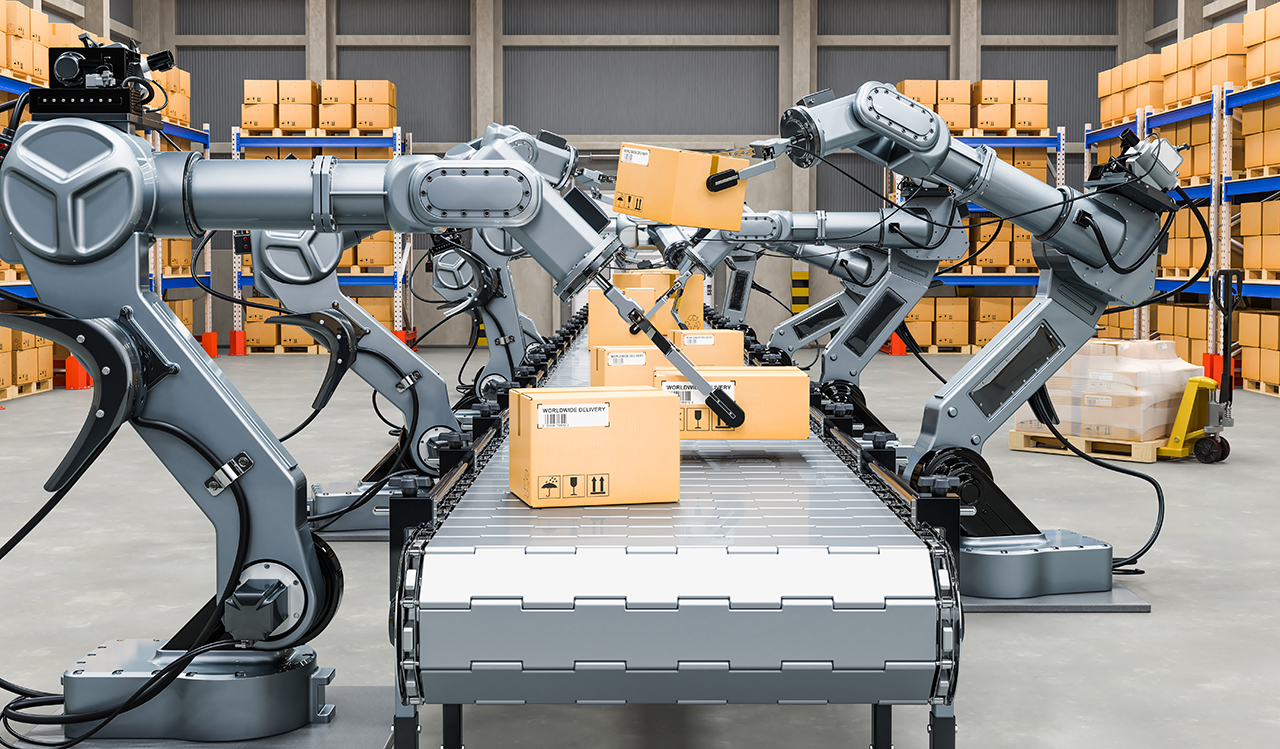
The Four Implementations of IoT in the Supply Chain
Internet-connected devices are here to stay. A Business Insider report suggests that by 2025 there will be nearly 65 billion IoT devices on earth, or, about 8 devices per person. This trend has significant implications for supply chain management. The following outlines how these IoT devices will be used to improve the supply chain process.
1. Manufacturing Products
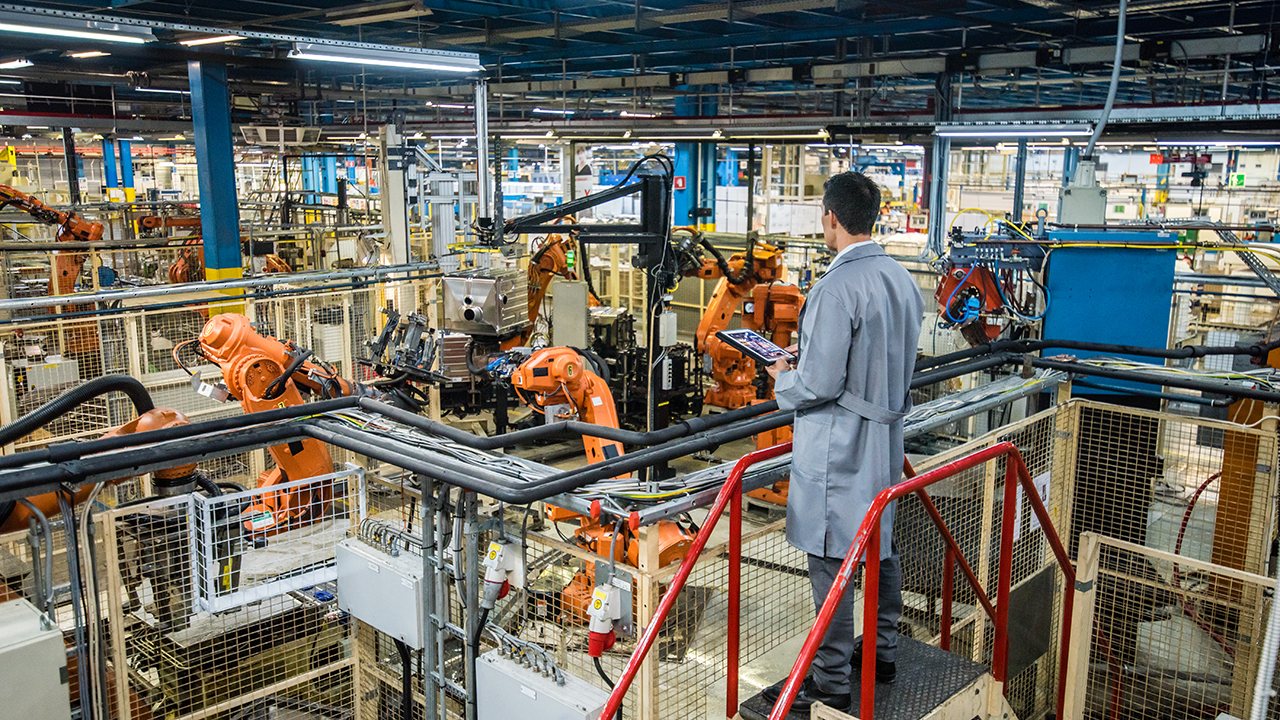
IoT devices on the factory floor can identify defects and reject flawed products. Although this use-case is already in practice, in the coming years it’s going to become ubiquitous.
Besides spotting flawed products, IoT sensors on the line can feed information to companies further down the supply chain. Just-in-time manufacturing will become common as everyone in the supply chain tracks the manufacturing process, from raw material to finished product and shipping/receiving.
Also, product development will be enhanced as IoT devices feed data back to the manufacturer. For instance, an Internet-connected vehicle can share information as components fail. In this way the manufacturer can gather high quality, reliable statistics about the failure and adjust accordingly. Beyond reliability, IoT devices will share all sorts of useful information about how they’re being used. This will allow manufacturers to create better products for their customers.
Finally, IoT will bring transparency to manufacturing. With devices recording every stage of production, from the sourcing of materials to the final packaging and shipping, it will be possible to verify the authenticity of any given product. Should there be a problem with quality, it will be easier to identify where in the production run things went wrong.
2. Shipping Products

The key benefits of IoT-enabled shipping are tracking and visibility: knowing the exact location, status and even the condition of goods at any given time. Tracking enabled by IoT extends beyond location monitoring to fleet management and environmental monitoring. With IoT sensors, supply chain management systems can measure conditions from originating shipping bay to the delivery shipping bay.
For instance in "cold chain" applications, temperature-sensitive items like food and pharmaceuticals can be closely monitored. IoT devices can measure temperature, humidity, and even light levels to ensure that a shipment has been transported under ideal conditions, and report those conditions into the cloud for analytics and compliance reporting. With constant monitoring comes peace of mind.
Sensors can also prove beneficial to the shipping company. They can be triggered to send alerts if temperatures are getting dangerously high, for example, allowing a courier to remedy the problem before an entire shipment is lost.
IoT devices can also help when filing a claim. Should the shipment arrive damaged, it will be possible to track it all the way back to the manufacturer to see exactly how the damage occurred, and where. For these reasons, IoT is destined to bring a whole new level of transparency to the shipping industry, from tracking cross-country shipments down to the last mile, to the continuous monitoring of freight conditions.
The return-on-investment will be enormous. For example, companies along the chain can prevent problems in refrigeration and freezer systems in trucking and storage from causing huge inventory losses, simply by installing sensors to report on problems.
3. Smart Warehousing
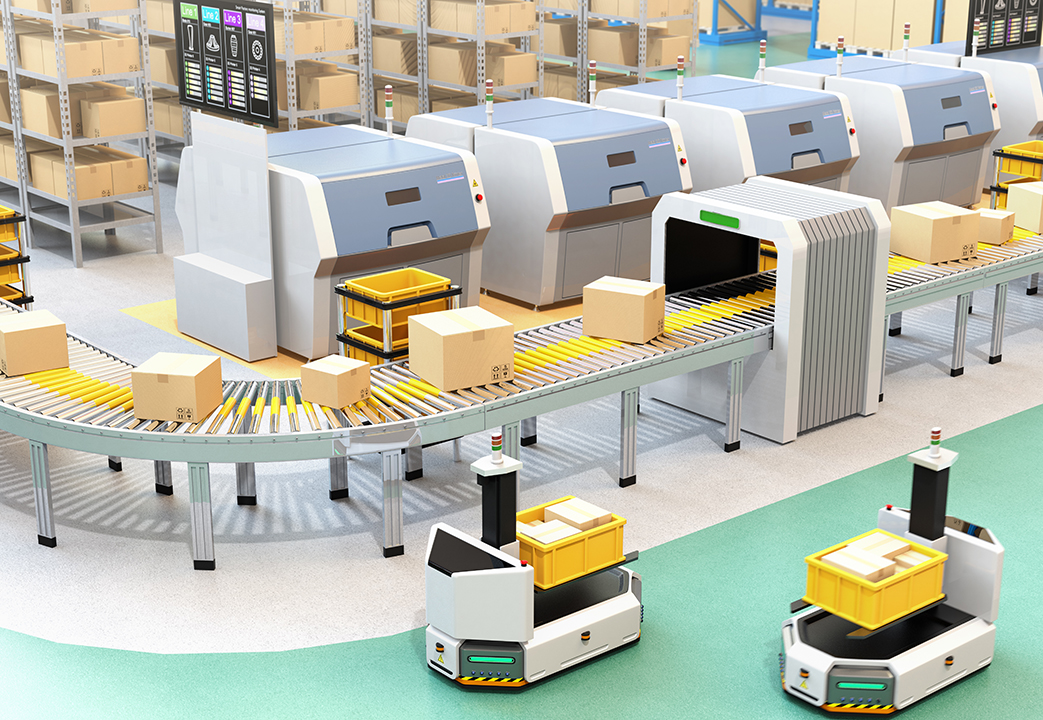
As with trucking and fleet management, IoT solutions also meet the needs of inventory management. After delivery of goods from the shipping company, warehoused goods can be tracked 24/7 to ensure that optimal storage conditions are met – without a human being needing to make the rounds with a clipboard. Alerts can be sent automatically if conditions exceed a certain threshold, enabling problems to be remedied before they impact product integrity, and helping the warehouse to manage compliance for things like temperature monitoring and quality control.
In addition, large companies may find that IoT devices can simplify inventory management. Whether that’s Internet-connected cameras scanning barcodes, or RFID chips placed on inventory to make it simpler to locate, connected devices make it easier to keep track of everything in the warehouse. Most famously, Amazon has an entire workforce of robots to manage their inventory.
4. Store Placement and the Final Sale

As we've discussed, IoT devices enable the tracking of products from raw material to the warehouse. Conveniently, this entire history can be (selectively) passed on to the consumer.
Manufacturers and retailers can choose to include information from the supply chain journey, giving consumers visibility into the sourcing of their food and goods, how long production took, where the factory was in relation to the store, and other data points of interest to their aware consumers. Such transparency has never before been possible. With an IoT network, this kind of reporting becomes relatively simple.
Technology Movers in IoT Supply Chain
In many ways, the Internet of Things is still in its infancy. Some of the enabling technologies for Industry 4.0, such as machine learning and artificial intelligence, are seeing huge growth as their practical applications become better understood by those who stand to benefit from them and as the capabilities expand. Here's a look at some of the influencers that stand to have a greater impact over time.
IoT in Robotics and Automation
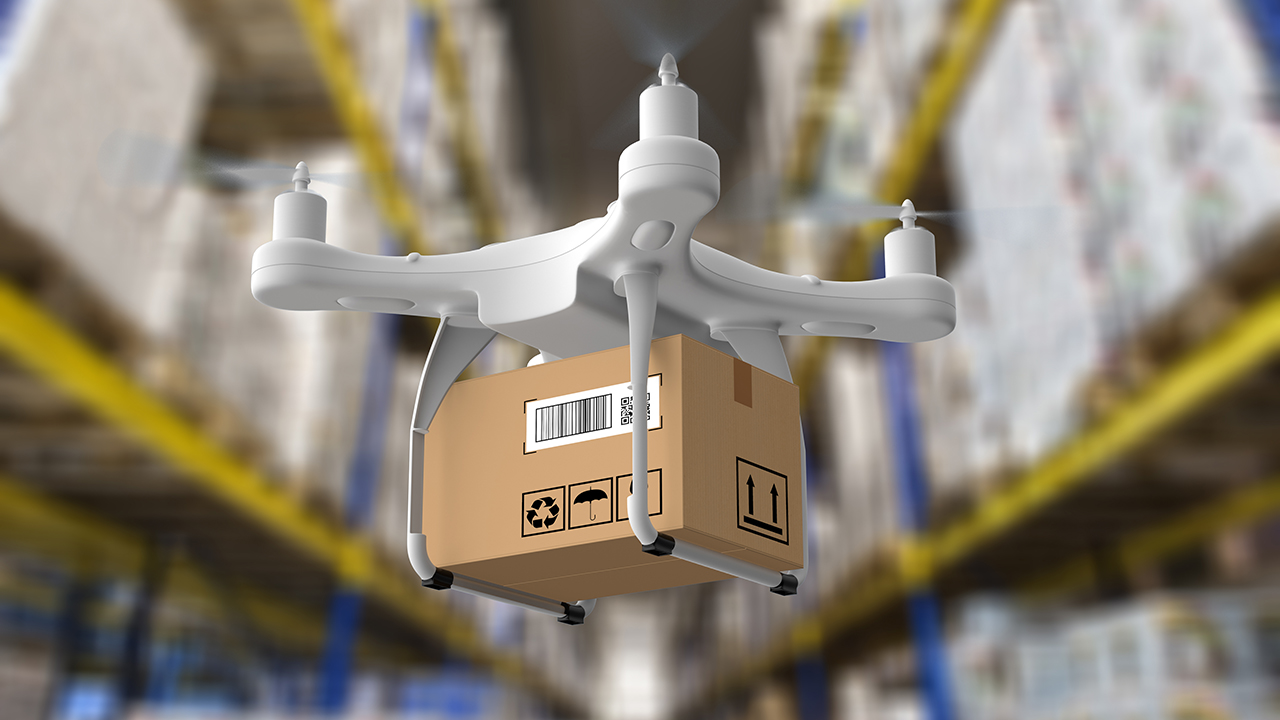
If it involves devices connecting wirelessly, then it’s an IoT application, or Industrial IoT (IIoT) application. Robotics and automation are key parts of the Internet of Things revolution. For example, drones are a cost effective way to perform an inventory check and will become more prevalent in a range of supply chain applications. As we all know, robotics are used heavily in product assembly. While those systems are typically wired today, over time they will increasingly become wireless for greater mobility and range, as well as lower cost.
Image recognition software is getting better every year, and has already become a reality in some retail locations. Amazon has an experimental store without cash registers: cameras track customers as they remove items from the shelf and bill them accordingly.
IoRT (The Internet of Robotic Things) is a growing niche. By monitoring their surroundings, robotic devices can make decisions and act autonomously. There will be a vast number of very practical use cases, such as an assembly line machine shutting down if it detects a foreign object, and robots and drones navigating around obstacles. The IoRT is an ecosystem of Internet-connected devices and their sensors, combined with powerful edge computing and the coming 5G networks, which will enable the next generation of smart robotics.
Developers looking to get into the race for much-needed supply chain products and solutions have excellent opportunities in this space.
IoT and Artificial Intelligence
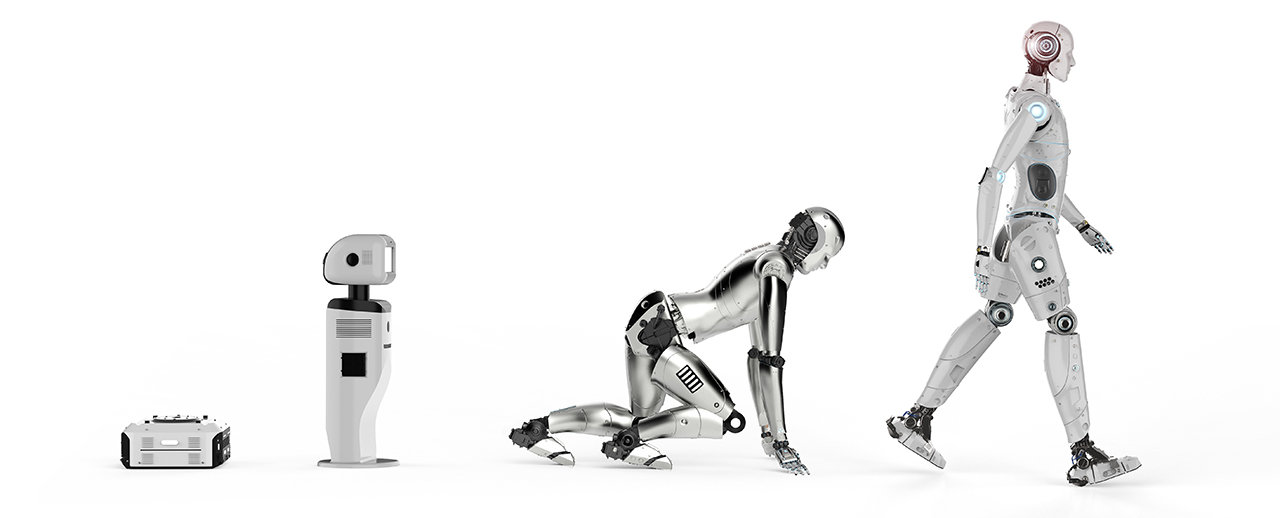
AI systems combined with machine learning are capable of analyzing historical data and discerning patterns to a level that no human can match. Accurate demand forecasting and predictive maintenance are both possible where AI application is fed data gathered from IoT devices as well as traditional sources. For example, using unsupervised learning and clustering, an AI system can be taught how to analyze manufacturing and sales data, along with demand, to determine an optimal production schedule.
Today AI is most often integrated as an advisor, helping humans to make better, data-driven decisions. However, as artificial intelligence proves itself, some organizations are delegating decision-making as well, giving their AI the power of execution. Examples include automatic supply replenishment and route planning.
In an AI and Robotics World, What Will the People Do?
Industry 4.0 is about using machines and artificial intelligence for what they do best - heavy lifting, fast calculations and business efficiencies where mechanized movement and computation-based decision making are simply less error prone. Further, they can "learn" tasks and alleviate the burden of mind-numbing tasks and reduce risk for the human work force by taking on dangerous and repetitive jobs. There are multiple viewpoints out there, from the level-headed perspective to the more fearful outlook.
There will certainly be an impact from new technologies on the way we work; the efficiencies that will come from the use of robotics and AI will mean we humans can manage processes, projects and facilities with fewer hiccups, and provide critical thinking, real world intelligence and insight, and that thing we call "gut instinct," which is the processing of information with sensibility. Moreover, you can't replace the human touch. We can listen, provide customer care, shake hands, give people feedback and make sure their needs are understood. The world will always change, but we believe the world we are heading toward will bring out the best in us all – human and machine alike.
The Future of IoT in Supply Chain
The heart of IoT is data: devices interacting with and recording their environment, then feeding that information to applications across the supply chain that deliver instant alerts, provide stakeholders with insights, and reduce friction and risk in moving items from production to their intended use.
As of today, humans continue to manually gather data and filter information in order to make decisions. As AI improves and new applications are developed, sophisticated supply chain applications will increasingly order materials that are running out, initiate production runs, perform automatic quality control, map out the best shipping routes, and send out alerts if storage conditions are incorrect.

The benefits will be widespread as production efficiency, quality and transparency increase. The C-suite is happy too, as they can receive accurate reporting and analytics on the health of business processes and make proactive decisions that continually improve the bottom line.
Whether you are looking for better insights and control over your supply chain, or you're seeking to develop products and applications in the supply chain space, work with a partner who provides all the resources you need to support your journey. Digi offers a complete set of IoT devices, developer tools, product development services, IoT management tools and end products for supply chain management. Contact us to start the conversation.